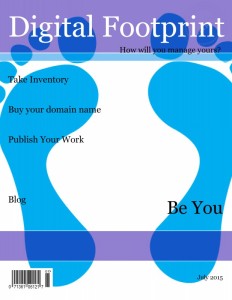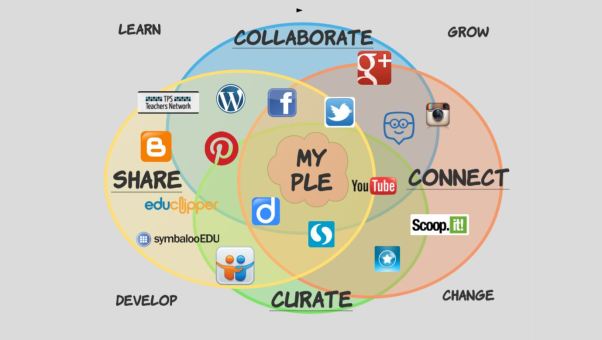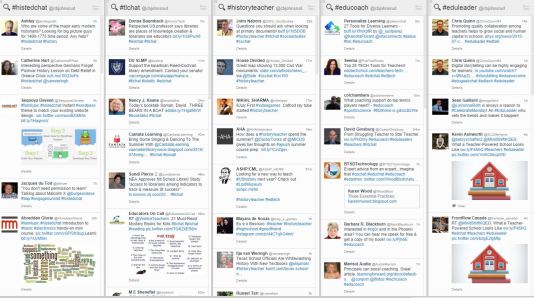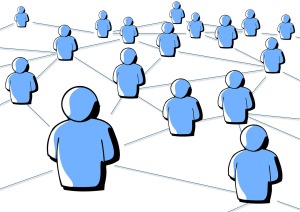
1. Establish My Personal Mission Statement – When thinking about my online presence, I am very much in the mindset of a youthful adolescent trying to figure out who he is, how he fits into the world, and how he establishes himself as an individual. Until I was asked to create a plan for establishing my Digital Footprint, I was wandering a path of uncertainly about my online identity. Who am I? How much of myself is and should be made public? What do I really want people to know about me? And perhaps my own struggle results from me not knowing whether the online me is and should be the same as the professional me. In a powerful blog post, Eric Stroller (2012) )writes, “The manner in which we engage, share, promote, and present ourselves online has become a major facet in many of our lives. No longer seen as being separate from ‘real life,’ an individual’s digital identity is intricately connected to their overall identity.” This statement made things clear to me. My mission statement for life should be the same one for my digital identity.
2. Conduct a Personal Audit – I’ve Googled my name. From what I can tell, I am the only Cinnamon Johnsrud in existence. And the first several links after Googling my name were all directly related to me- my Twitter account, my personal (and private) Facebook account, my Boise State work, etc. The images were also pictures of me, but they also included pictures of my co-workers and Will Smith. Yes, the Will Smith. What I want to do is to find out exactly how and why these pictures are associated with my name. Taking an inventory with a “dig deep” approach will be beneficial as I work to establish my name as a professional (Ragone, 2006).
3. Purchase my Domain Name – Over and over, I found advice that emphasized the importance of having a personal domain name when establishing one’s professional web presence. Perhaps among the most important reasons for purchasing and creating a personal website is the ability to have some control over the content that appears on the web. With my domain name as a central location to house my digital identity, I can take greater ownership of my digital footprint (Lowenthal & Dunlap, 2012).
4. Complete my Profiles on Social Media Accounts – After Googling my name, I learned that many of my social media sites have incomplete profiles. My Google+ profile, for example, only has my picture and my name. This certainly leaves an incomplete picture of who I am. Some of my accounts that have no profile whatsoever- I certainly have some work to do (Lowenthal & Dunlap, 2012).
5. Create a Professional Blog and Publish my Work- Establishing myself with a domain name and a professional blog can not only provide me with a place to showcase my work as a professional, but it can also give me greater control over my digital footprint. I know that I have ideas, lessons, and resources to share with others. In fact, some of my colleagues have asked me to establish a repository of resources for them. I am not one who likes to put myself out in the open, but because I am convinced of the power that I can have over my digital footprint in doing so, I am ready to take the leap (Carozza, 2012).
6. Protect What Needs to Be Protected -I know that there is a fine balance between making information about myself public while maintaining some personal privacy. Reviewing my privacy settings on social media accounts and identifying ways to maintain personal information private is important (“Protect your privacy on the internet”, n.d.).
7. Be Consistent with my Blog and Social Media Posts– There have been many times that I have come across blog that may have captured my attention, only to lose interest once I realize that the blog hadn’t been updated in quite some time. While many components of my plan to establish and maintain my digital footprint require only minimal time, this is an area that will require a consistent and concerted effort. Given the fact that I only have so much time on any given day, I need to establish a realistic routine and set up reminders (Taub, 2013).
8. Set up a Google Alert and Monitor- It’s one thing to be cognizant of what I write and say about myself when I post online. It’s another thing when someone else writes about me. Fortunately, setting up a Google Alert will keep me informed any time my name is put online. This is a powerful tool that will keep me aware of what is being written about me by others (Hart 2011).
9. Establish an Intentional Web Presence with SEOs- In many ways, the workings of the internet are are still a mystery to me. While reading about ways to improve my online presence, I did learn quite a bit about how to increase the visibility of my established websites using Google’s Search Engine Optimization Starter Guide. After purchasing my domain and creating a blog, I plan to review these steps to increase the visibility of my site (“SEO for Teachers”, 2014).
10. Be Human. Be Me. – Bonnie Stewart’s article (2012),”Digital Identities: Six Key Selves of Networked Publics” left me wondering about how authentic some people are online. Depending on the task or purpose when roaming an online world, we many not always present a complete, accurate picture of ourselves. Sometimes this intentional, and sometimes it isn’t. I have no intention of ever presenting myself as something I’m not. Opening up the more personal aspects of my life (without making myself too vulnerable) will simply make me more human, more relatable, and more me.
References:
Carozza, B. (2012, June 9). 5 Reasons Educators Should Blog. Retrieved July 13, 2015, from http://connectedprincipals.com/archives/5835
Hart, S. (2011, October 11). Monitoring Your Name and Your Brand with Google Alerts. Retrieved July 7, 2015, from http://pixsym.com/blog/reputation-management/monitoring-your-name-and-your-brand-with-google-alerts/
Lowenthal, P., & Dunlap, J. (2012, June 6). Intentional Web Presence: 10 SEO Strategies Every Academic Needs to Know | EDUCAUSE.edu. Retrieved July 5, 2015, from http://www.educause.edu/ero/article/intentional-web-presence-10-seo-strategies-every-academic-needs-know
McGinnis, S. (2012, August 23). Online Reputation Management: A How-to Guide by @seanMcGinnis. Retrieved July 7, 2015, from http://spinsucks.com/communication/online-reputation-management-a-how-to-guide/
Protect your privacy on the Internet. (n.d.). Retrieved July 7, 2015, from
https://www.microsoft.com/security/online-privacy/prevent.aspx Ragone, A. (2006, April 15). Google “Your Name” = Your Resume… or Your Life. Retrieved July 6, 2015, from https://alexragone.wordpress.com/2006/04/15/google-your-name-your-resume-or-your-life/
Ramspott, B. (2013, January 15). 2013: The Year of Digital Identity Development in Higher Education. Retrieved July 7, 2015, from http://blog.case.org/2013/01/15/2013-the-year-of-digital-identity-development-in-higher-education/
SEO for Teachers: How to Get Your Website Ranked Highly in the Search Engines. (2014, June 26). Retrieved July 7, 2015, from http://www.teachingeslonline.com/seo-teachers
Stewart, B. (2012, May 6). Digital Identities: Six Key Selves of Networked Publics. Retrieved July 7, 2015, from http://theory.cribchronicles.com/2012/05/06/digital-identities-six-key-selves/
Stoller, E. (2012, September 12). Digital Identity Development | Student Affairs and Technology | InsideHigherEd. Retrieved July 7, 2015, from https://www.insidehighered.com/blogs/student-affairs-and-technology/digital-identity-development
Taub, A. (2013, June 7). 5 Key Things Needed To Improve Your Digital Identity. Retrieved July 8, 2015, from http://www.forbes.com/sites/alextaub/2012/06/07/5-key-things-needed-to-improve-your-digital-identity/






